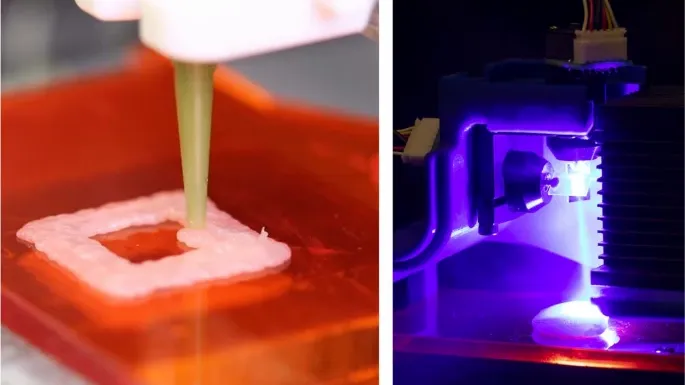The future may see a ‘Photoshop’ of digitized recipes for printing food.
The future may see a ‘Photoshop’ of digitized recipes for printing food.

Consumers may soon have a Jetson-like ability to not only digitally print food but also cook it with lasers.
Back in the early 1960s, when U.S. space agency NASA was working toward sending astronauts to the moon, “The Jetsons” cartoon series offered a comical take on future family life with food prepared by machines at the touch of a button.
Engineers at Columbia University have taken a step toward making the Jetson family meals a reality by creating a single device that can use a 3D printer to assemble food and lasers to cook it.

“Food is something that we all interact with and personalize on a daily basis. It seems only natural to infuse software into our cooking to make meal creation more customizable,” said lead researcher Jonathan Blutinger.
The Columbia “Digital Food” team, led by mechanical engineering Professor Hod Lipson, has been working on 3D-printed foods for nearly 15 years and is now experimenting with multi-ingredient printing.
“We noted that, while printers can produce ingredients to a millimeter-precision, there is no heating method with this same degree of resolution,” Blutinger said. “Cooking is essential for nutrition, flavor and texture development in many foods, and we wondered if we could develop a method with lasers to precisely control these attributes.”
“In fact, our two blind taste-testers preferred laser-cooked meat to the conventionally cooked samples, which shows promise for this burgeoning technology,” Blutinger added.

The technology developed by Columbia University researchers has moved closer to allowing users to use autonomous devices to cook whatever food they like, which can then be tailored for desired flavor, texture and shape.
The researchers achieved food-safe temperatures by using a blue laser to trace a spiraling path on meat, while an infrared laser was more efficient at browning the surface of the meat. Cooking patterns were also tested; a higher laser speed produced quicker initial temperature increases, while a single pass of the laser at a slower speed cooked the food at a slower rate.
Though the hardware and software is relatively low-tech, there isn’t yet sustainable support system, said the study’s authors.
“What we still don’t have is what we call ‘Food CAD,’ sort of the Photoshop of food. We need a high-level software that enables people who are not programmers or software developers to design the foods they want,” Lipson said. “And then we need a place where people can share digital recipes like we share music.”

For the study, published in npj Science of Food, chicken was put through a blender and then extruded through a nozzle by a 3D printer.
The chicken samples were printed at a thickness of 3 millimeters on a testbed approximately 1-inch square. Scientists tested a range of parameters including cooking depth, moisture retention, flavor and color development while comparing the differences between laser-cooked and conventionally cooked food.
They showed that they could bring the chicken to a safe temperature and achieve desired browning, which imparts significant flavor. The study also showed that meat cooked with lasers shrinks 50 percent less than conventionally cooked meat, retains a similar flavor and doubles the moisture content.
One area where printing food had previously shown promise is for long-term space missions. In 2013, NASA awarded a $125,000 contract to develop 3D-printed food to extend food shelf life in space from five to 30 years.
Edited by Richard Pretorius and Kristen Butler

